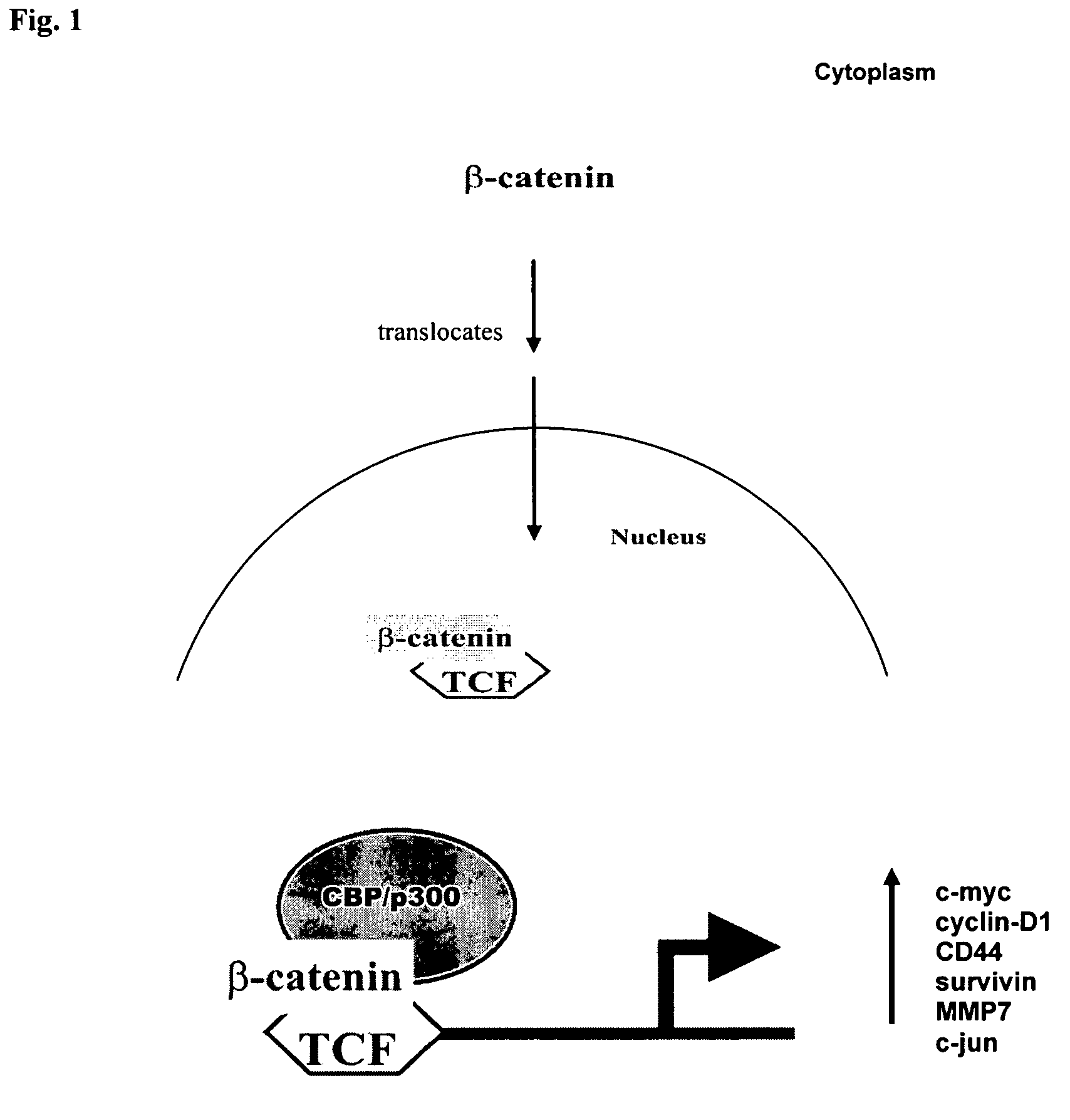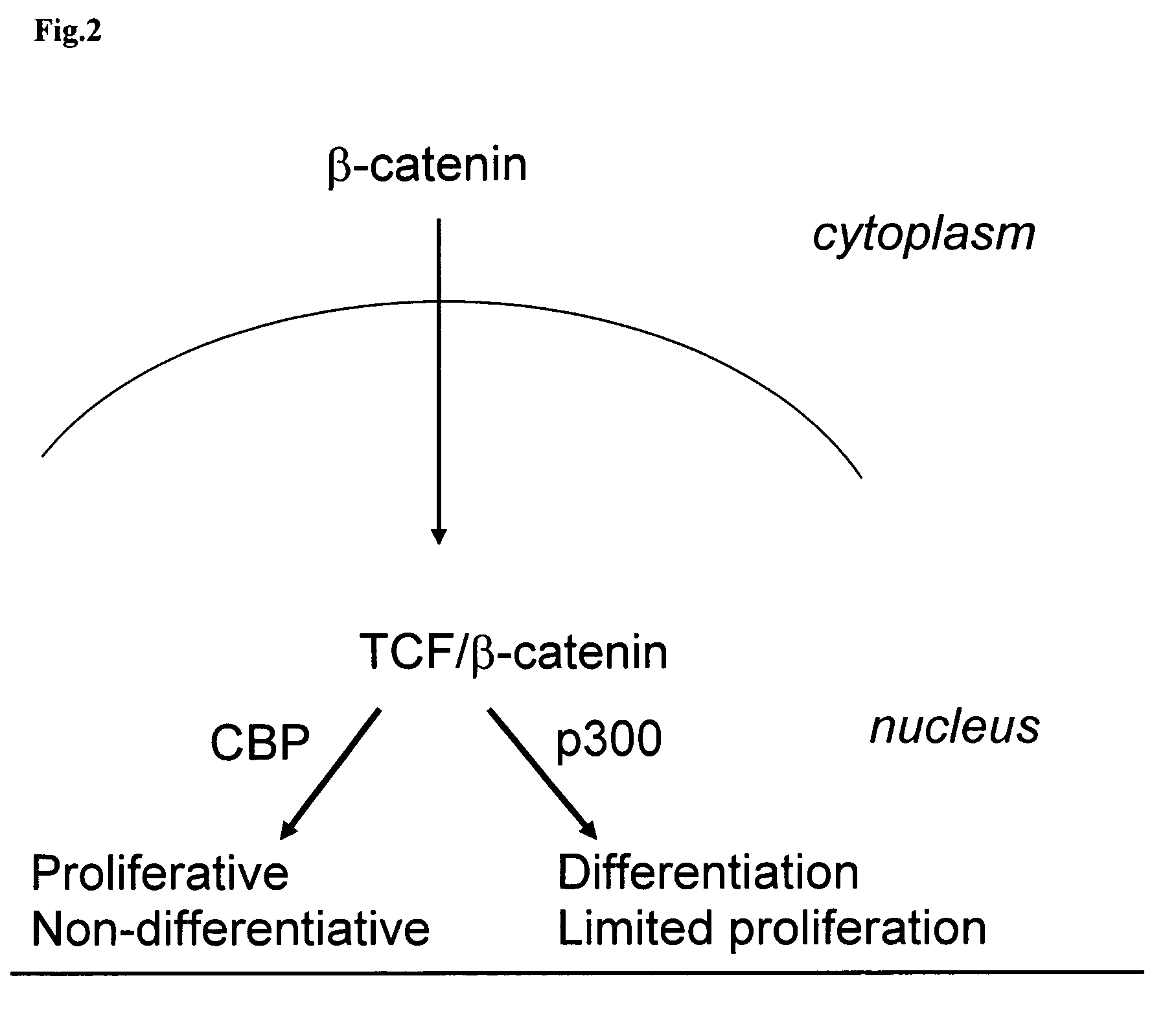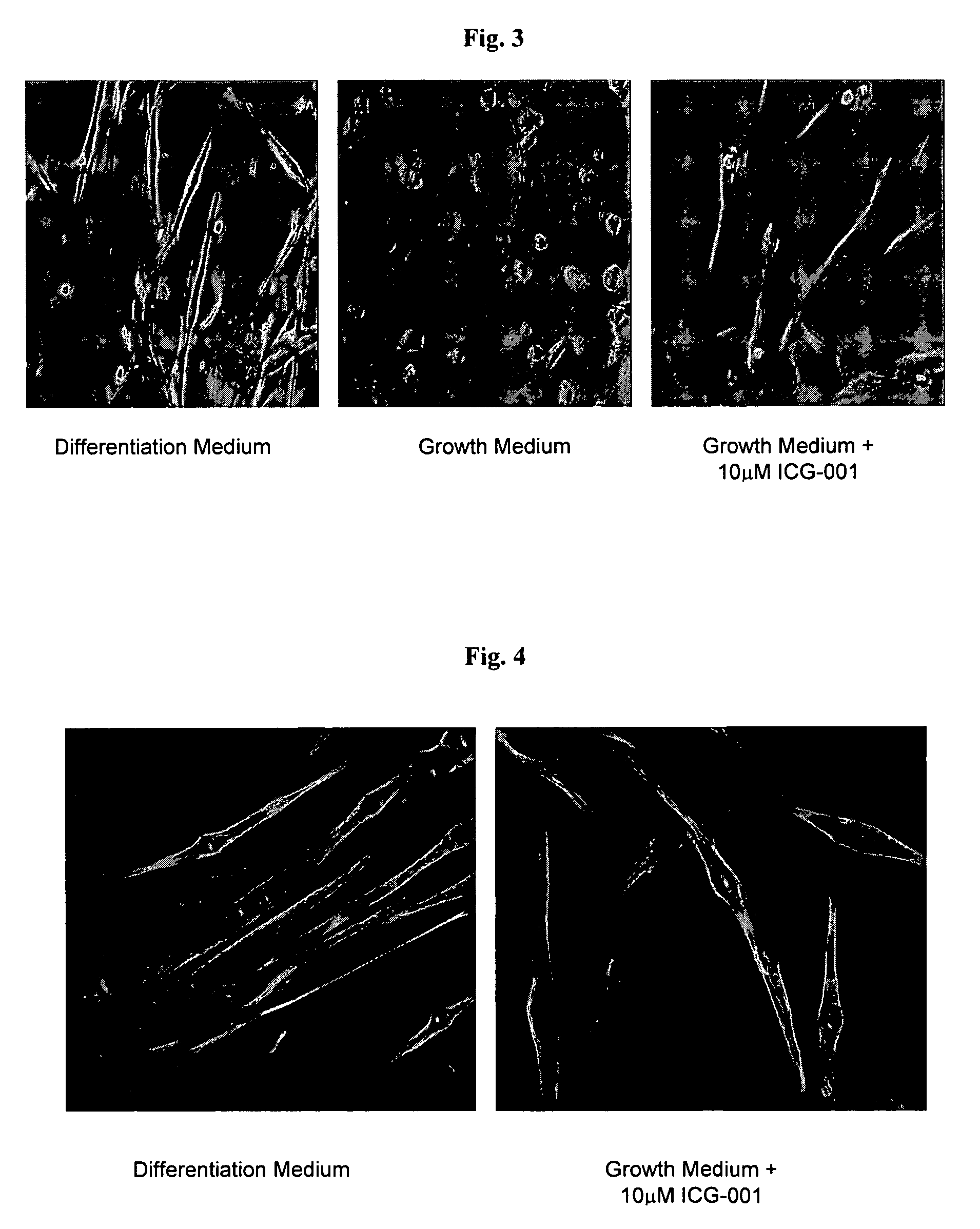Modulation of beta-catenin coactivator interactions to effect stem cell growth or differentiation
a coactivator and beta-catenin technology, applied in the field of stem cell growth or differentiation, can solve the problems that no existing ex vivo method can prevent stem cell differentiation, and the development of adult stem cell applications has been severely impaired, so as to enhance the proliferation of mammalian stem cells, increase and reduce the binding of -catenin
- Summary
- Abstract
- Description
- Claims
- Application Information
AI Technical Summary
Benefits of technology
Problems solved by technology
Method used
Image
Examples
Embodiment Construction
[0033]Stem cells are responsible for the regeneration and maintenance of tissues by balancing the processes of self-renewal (i.e., making new stem cells) and differentiation (i.e., generating cells committed to terminal differentiation). This balance results from integration of regulatory signals intrinsic to the stem cell, as well as extrinsic signals from the microenvironment. Perturbations in the balance between self-renewal and differentiation may result in disease, either as a result of stem cell depletion (e.g., aplastic anemia) or increased self-renewal (e.g., cancer).
[0034]Most knowledge about the molecular mechanisms of stem cell regulation in mammals has been derived from studies of the hematopoietic system. There is an extensive and expanding understanding of the molecular mechanisms that regulate differentiation along the terminal lineages. However, a mechanistic understanding of the mechanisms that regulate hematopoietic stem cell (HSC) fate decisions is less well under...
PUM
 Login to View More
Login to View More Abstract
Description
Claims
Application Information
 Login to View More
Login to View More - R&D
- Intellectual Property
- Life Sciences
- Materials
- Tech Scout
- Unparalleled Data Quality
- Higher Quality Content
- 60% Fewer Hallucinations
Browse by: Latest US Patents, China's latest patents, Technical Efficacy Thesaurus, Application Domain, Technology Topic, Popular Technical Reports.
© 2025 PatSnap. All rights reserved.Legal|Privacy policy|Modern Slavery Act Transparency Statement|Sitemap|About US| Contact US: help@patsnap.com



